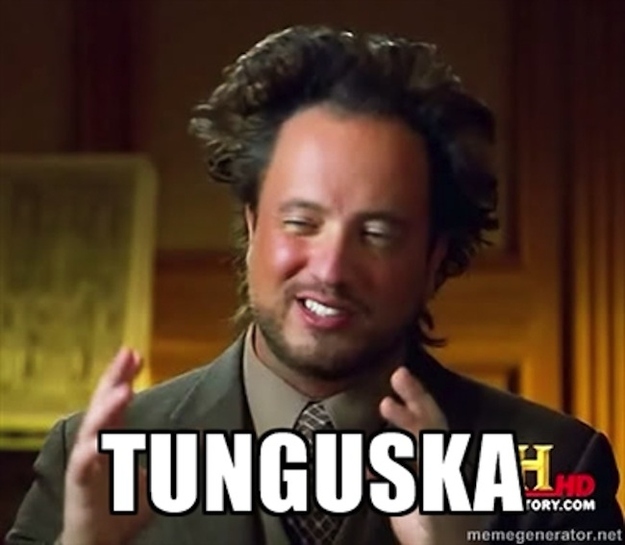On June 30, 1908, at approximately 7:17 AM, an explosion occurred over the Podkamennaya Tunguska River in a remote part of Siberia. The "Tunguska Event," as it would become known, remains the largest impact event on or near Earth in recorded history.

Observers saw a huge column of light "as bright as the sun" moving across the sky. Ten minutes later, there was a bright flash, a violent boom and a shock wave that knocked people off their feet and shattered glass windows.

The explosion leveled an estimated 80 million trees over an 830 square-mile area and reportedly killed more than 1,000 reindeer.

Witness accounts of the Tunguska Event give an idea of the magnitude of the explosion:
An eyewitness 40 miles south of the site described the blast:
"I was sitting in the porch of the house at the trading station of Vadecara at breakfast time...when suddenly in the north...the sky was split in two and high above the forest the whole northern part of the sky appeared to be covered with fire. At that moment I felt great heat as if my shirt had caught fire; this heat came from the north side. I wanted to pull off my shirt and throw it away, but at that moment there was a bang in the sky, and a mighty crash was heard. I was thrown to the ground about three sajenes [about 7 meters] away from the porch and for a moment I lost consciousness.... The crash was followed by noise like stones falling from the sky, or guns firing. The earth trembled, and when I lay on the ground I covered my head because I was afraid that stones might hit it."
The Irkutsk paper's report:
"The peasants saw a body shining very brightly (too bright for the naked eye) with a bluish-white light.... The body was in the form of 'a pipe', i.e. cylindrical. The sky was cloudless, except that low down on the horizon, in the direction in which this glowing body was observed, a small dark cloud was noticed. It was hot and dry and when the shining body approached the ground (which was covered with forest at this point) it seemed to be pulverized, and in its place a loud crash, not like thunder, but as if from the fall of large stones or from gunfire was heard. All the buildings shook and at the same time a forked tongue of flames broke through the cloud.
All the inhabitants of the village ran out into the street in panic. The old women wept, everyone thought that the end of the world was approaching."
In 1921, a mineralogist named Leonid Kulik concluded from eyewitness reports that the explosion was from a meteorite impact. He convinced the Soviet government to fund an expedition to the site in 1927.
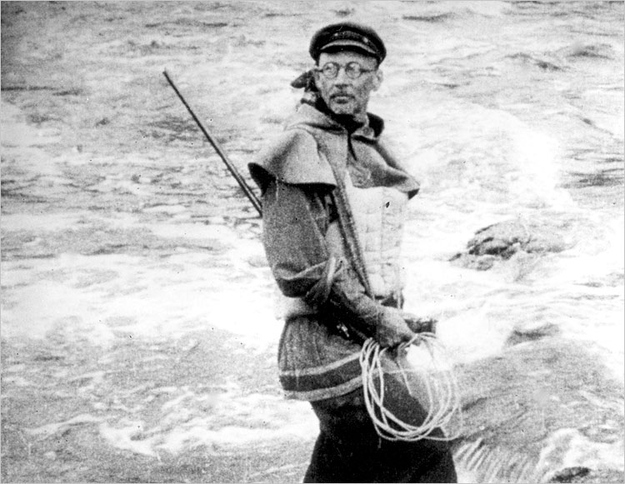
The team of scientists used the fallen trees - which pointed directly away from the blast's epicenter - to guide their way to ground zero.
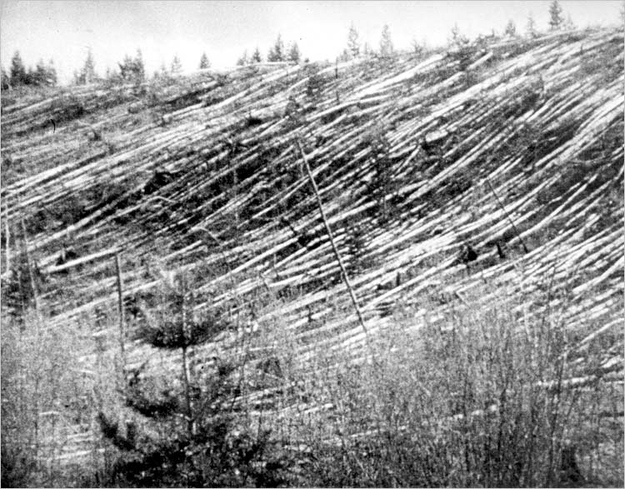
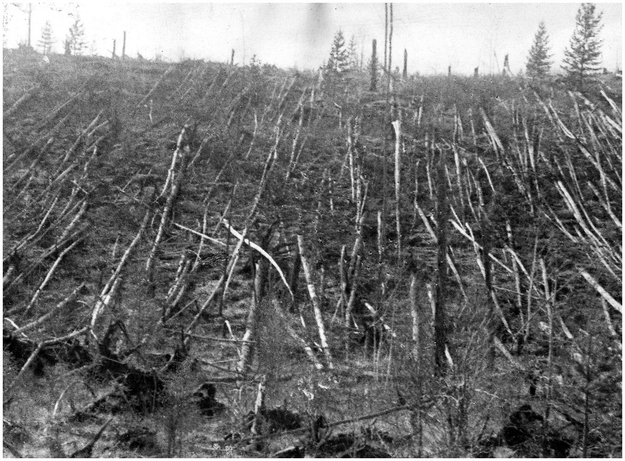
They were surprised to find no sign of an impact crater when they reached ground zero. Instead, they found trees standing upright whose limbs and bark had been stripped away. Similar trees would be found in Hiroshima, Japan 37 years later.
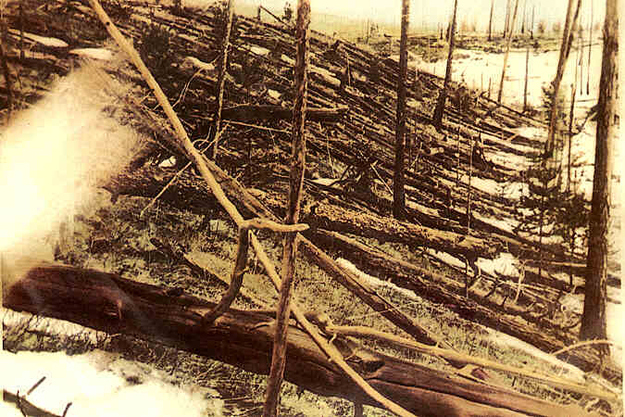
Kulik returned with an airplane in 1938. Aerial photography of the area revealed that the toppled trees formed an odd, butterfly-shaped pattern.

Scientists today still argue about the details of the event, but the generally-accepted theory is that on the morning of June 30, 1908, a large space rock, about 120 feet across, entered the atmosphere of Siberia and then detonated in the sky.

NASA reports:
It is estimated the asteroid entered Earth's atmosphere traveling at a speed of about 33,500 miles per hour. During its quick plunge, the 220-million-pound space rock heated the air surrounding it to 44,500 degrees Fahrenheit. At 7:17 a.m. (local Siberia time), at a height of about 28,000 feet, the combination of pressure and heat caused the asteroid to fragment and annihilate itself, producing a fireball and releasing energy equivalent to about 185 Hiroshima bombs.
A supercomputer simulation models the cataclysmic power of an asteroid explosion:
Of course, there are alternate theories.
